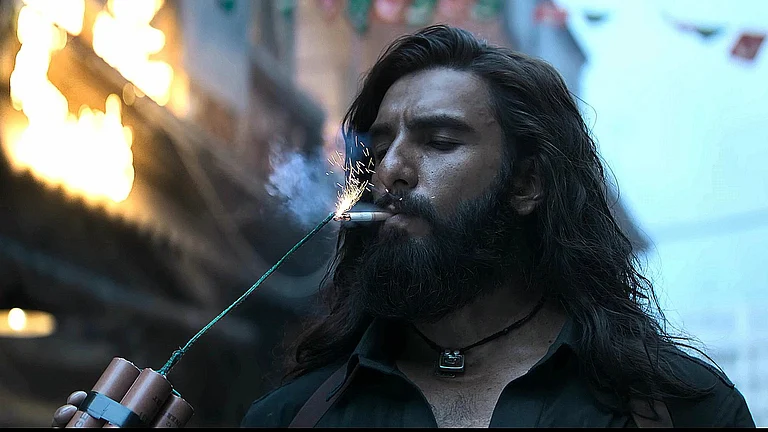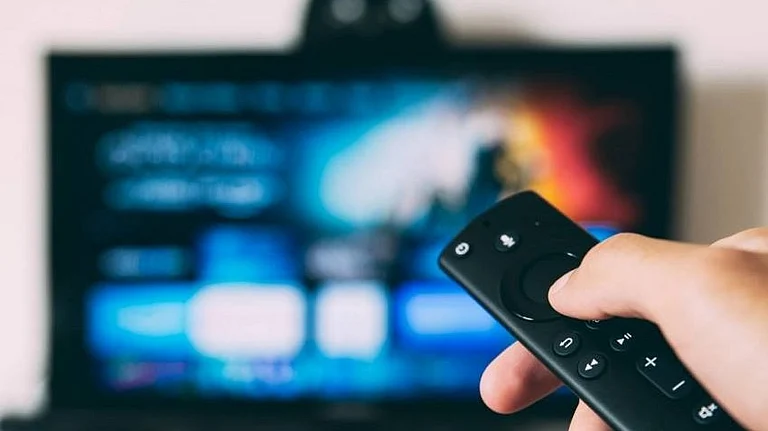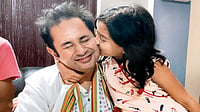Political discourse in the run-up to Uttar Pradesh assembly elections is no more about Ayodhya and the Ram temple for the BJP. It has been subtly sidestepped, replaced by snide references to intrigues in the 17th-century Mughal dynasty, portraying Mulayam Singh Yadav as the emperor Shah Jahan and son Akhilesh as the ambitious Aurangzeb.
The Yadav family feud, especially the conspicuous bitterness between father and son, has given the BJP an opportunity to take some sheen off Akhilesh’s “good boy” image by invoking the comparison with Aurangzeb, who had confined his father at Agra Fort in the battle of thrones. While political circles buzz with conspiracy theories about the cause of the rift, the BJP has pulled out all the stops in playing it to the gallery. A unified Samajwadi Party (SP), with Akhilesh firmly at the helm, would be a formidable force for the BJP to contend with. And if the much talked about SP-Congress tie-up happens, the BJP knows it will have something to worry about.
Not the one to underestimate a political rival, BJP president Amit Shah went on record four months ago, claiming his party’s main fight was with the SP, though he was not writing off Mayawati’s Bahujan Samaj Party (BSP). Shah has been working in the state for the past two years, micromanaging things and laying the booth-level groundwork for elections. Now, Prime Minister Narendra Modi is leading the campaign in the state, talking of development and the government’s pro-poor policies.
The BJP’s national spokesperson and pollster G.V.L. Narasimha Rao says the party’s strategy will be to project “transformational governance” in UP, in tandem with the PM’s delivery of “pro-poor governance”. “The election is increasingly turning into a Modi-versus-none battle, promising a repeat of 2014 (Lok Sabha elections), this time on the strength of a demonetisation-propelled wave.”
A party general secretary, who did not want to be identified, agrees that Modi and demonetisation have completely changed the political narrative. “In an electorally complex state like UP, where caste and religion play a predominant role, demonetisation has created a new parameter—that of class,” he says. “The caste differential has receded to the background, with the narrative of the honest-poor versus the corrupt-rich becoming stronger. The poor, cutting across castes, are feeling a sense of empowerment. They feel the rich have been taught a lesson.”
So, the focus of the party’s campaign is going to be Modi and his bold moves like demonetisation and surgical strikes in Pakistan-occupied Kashmir (PoK), which also strengthens the party’s nationalist credentials.
For the BJP, the battle for the most populous state is about more than just winning. The party’s prestige is at stake. Though the Ram temple may not be an issue anymore, the metaphor of Lord Ram’s 14-year vanvaas (exile) is being used frequently by party leaders after Modi mentioned it at his January 2 Parivartan rally in Lucknow. “The BJP will end 14 years of vanvaas in UP,” Modi had said, addressing the massive rally at Ramabhai Ambedkar ground. It has been 14 years since BJP lost power in 2002.
Also, the 2014 Lok Sabha election set the benchmark high for the party when it won 71 out of 80 seats, with its highest ever vote share of 42 per cent. Party leaders acknowledge that maintaining the vote share in assembly elections is almost impossible, but are confident they will win UP this time. “Our highest vote share in the UP assembly polls was 33 per cent in 1991, mainly because of the Ayodhya movement,” says a party leader from the state. “This time we will definitely surpass it by riding the demonetisation wave.”
While many BJP leaders feel that keeping the focus on demonetisation and projecting the PM as a crusader against corruption has created a Modi wave all over again, which will make the elections a cakewalk for the party, Modi has been more cautious. Addressing the BJP’s national executive on January 7, Modi is believed to have said that merely a hawa or a wave won’t suffice; it has to be focused in the right direction. “Jitna bhi toofan ho, hawa tyre mein nahin jayegi. Usse bharna padega (no matter how strong the wind, the tyre won’t fill up on its own; it will have to be filled),” he said.
For now, the BJP leaders are busy filling up the tyre. Their overwhelming refrain that the party will sweep the elections, winning over 300 of the total 403 seats. Outlook spoke to several of them to get a sense of what the party is planning for its UP campaign and how it is being managed. From these conversations, it becomes apparent that the BJP may well leave nothing—from wooing Yadavs and Dalits to polarisation on community lines—out of its agenda in order to beef up its vote share.
“Modiji’s message at the Moradabad rally, urging Jan Dhan account holders to keep the money deposited in their accounts by black money hoarders, has gone down well with people on the ground,” says a BJP leader. “We believe that a large number of these account holders are Dalits, who have been used by the BSP to clean its money. Post-demonisation, a sizable number of Dalits may shift to the BJP, denting the BSP vote bank.”
The BJP also plans to poach on the SP’s Yadav vote bank. A BJP leader from UP talks about a strong “thana culture” in the state, where clout with the local bahubali (strongman)—generally the local politician who has much influence at the police station—is much sought after. “There is a growing sense among the Yadavs that whenever there is a conflict with the Muslims, the thana tends to favour the Muslims. They feel that the Samajwadi Party is trying too hard to woo Muslims,” he says. “We are trying to tap this sentiment.”
BJP state president Keshav Maurya is confident of bagging 40 per cent of the Yadav votes. “Mulayam and his family should not consider the Yadavs as their jaagir (fiefdom). And what exactly have they done for the Yadavs?” he asks. “And just as the SP had done nothing for Yadavs, the BSP had done little for improving the lives of Dalits and OBCs. The field is wide open for us and we will win 300 seats.”
“You will see ‘sabka saath, sabka vikas’ in the real sense. We will follow this motto announced by Modiji at every level. It will reflect in the ticket distribution as well,” he adds, hinting that Yadavs and Dalits will get a fair share. It is evident that the party is trying to shed its image of being dominated by the upper castes.
Interestingly, in its assessment of its chances in the UP polls, the party seems to have reconciled with—and factored in—the fact that the Muslims won’t vote for the BJP. “We have more or less given up on the 18 per cent Muslim votes in the state,” admits a central BJP leader. “The ground reports are not very encouraging as far as Muslim voters are concerned. At best, we can try to gain electoral dividends through some communal polarisation, especially in western UP and other parts of the state with a substantial Muslim population.”
In that case, observers expect more statements from ‘saffron’ politicians like Sakshi Maharaj, who recently got into trouble with the Election Commission of India for his communal remark at a sant sammelan in Meerut. The Unnao MP blamed “those with four wives and 40 children” for population explosion. Earlier, Union minister Sadhvi Niranjan Jyoti had compared Akhilesh to Aurangzeb. “For the BJP, the Ram temple and Hindutva are not real issues, but are definitely useful as distractions and to keep its core vote bank intact,” the central leader tells Outlook.


























